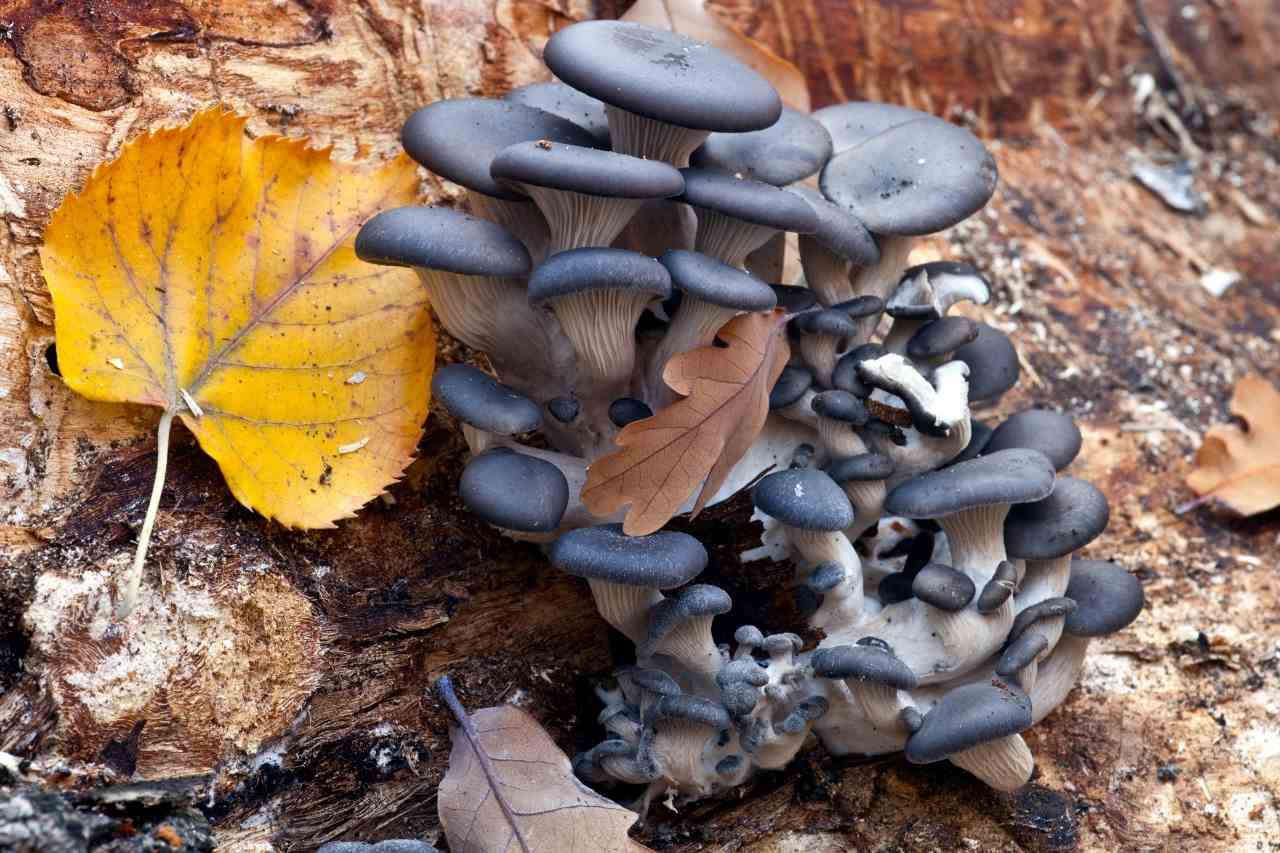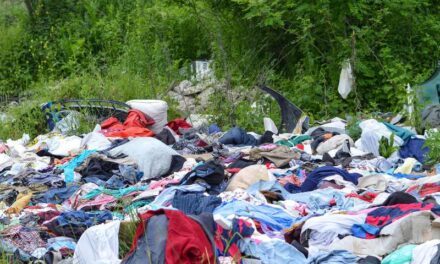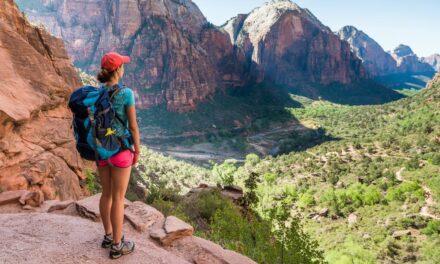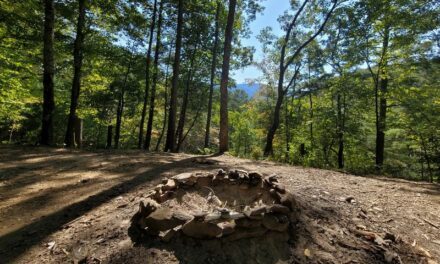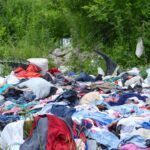When I am out in the woods, I love taking a look around to see what is growing in nature, especially mushrooms. There are so many types, both edible and inedible, growing in the wild. Mushrooms are the fruit body of fungi and the various shapes, sizes, colors, and how they grow intrigue me. There is an element of mystery around mushrooms. This past winter, my family gave me a kit to grow my own blue oyster mushrooms. It was such a fun – and delicious – gift!
While I have come across oyster mushrooms in the wild, I had never seen the blue version. My gift was a Blue Oyster Mushroom kit from North Spore LLC. The mushrooms were very easy to grow thanks to the small guide that comes with the kit.
Oyster mushrooms are the most cultivated mushrooms.
Oyster (pleurotus) mushrooms can be easily identified by their shelf-like appearance. You can often find them growing in overlapping clusters on living or dead trees. The mushrooms feature closely spaced gills that run down the stem, which may be short, stubby, or non-existent. Oyster mushroom caps are fan-shaped with a smooth upper surface. The white gills come together under the cap – very much resembling an oyster seen on the ocean coast or at the market. They are soft with a slightly chewy texture. When cooked, they have a mild and nutty, seafood-like flavor.
I was curious to learn more about the Blue Oyster mushroom and other edible oyster mushrooms found in the woods. Mushrooms are a low-calorie food: one cup of sliced oyster mushrooms is only 37 calories!
Eating oyster mushrooms can help:
- Lower cholesterol
- Provide a valuable source of vitamin D, protein, fiber, potassium, vitamin B6, and folate.
- Help to reduce inflammation
Growing my own Blue Oyster mushrooms was fun and deliciously rewarding.
I was facinated by the process of growing my own mushrooms, and documented as much as I could along the way. Follow along with me on my mushroom growing journey!
- Day 1. I read the directions to my North Spore Blue Oyster Mushroom kit and activated it by spritzing water on the sliced plastic where the mushrooms would be growing. Watering is a 1-2 times per day activity throughout the growing process.
- Days 3 – 11. The colonization of mushroom mycelium, a white substance, began to cover the block until it was fully encompassed with mycelium.
- Days 12-14. Pinning occurred, when rhizomorphs (tiny white pin headed dots) formed under the plastic covering.
- Day 15. Tiny clustered mushrooms resembling white bumps pushed out from under the plastic covering, some looking very strange in appearance.
- Days 16-19. Two clusters began to grow very rapidly, connecting, and curved tops began to flatten.
- Day 20. I twisted off the cluster of mushrooms from the box and immediately noticed how they looked like fresh shucked oysters. The earthy smell they emitted reminded me of being in the woods. They felt a little rubbery.
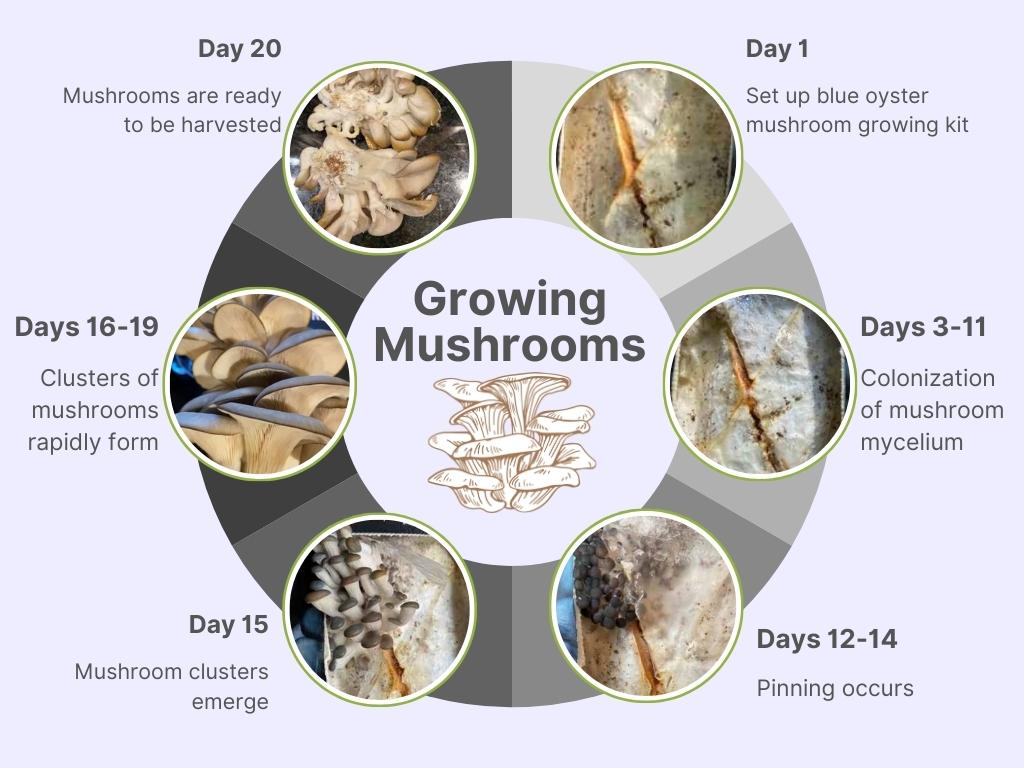
The best part of my mushroom experiment: eating them!
I chose to sautee my fully-grown blue oyster mushrooms – and they were truly worth the effort. I sautéed the mushrooms with a little olive oil, garlic, onion, herbs and white wine. Get my recipe here, which was adapted from North Spore’s famous mushroom recipe.
The gift that kept on giving…
The directions on the North Spore Blue Oyster Mushroom kit promised that I could grow mushrooms several more times after harvesting my first batch. So, in accordance with the package directions, I let the plant rest and did not water it. One week later, I was surprised to see my oysters reappear. I am very excited to experiment with blue oyster mushrooms in other dishes in the coming months.
Interested in growing or foraging for your own mushrooms? Make sure you’re informed first!
If you are interested in learning more about mushrooms, I would highly recommend connecting with someone in your local area who is well educated on identifying edible fungi and foraging. Above all, be careful: It’s common to find “imposter” mushrooms that look like an edible variety but are, in fact, poisonous.
If you’re located in Western Pennsylvania, I recommend The Western Pennsylvania Mushroom Club. Other reliable YouTube resources include Introduction To Wild Mushrooms with Adam Haritan (Learn Your Land) and INaturalist.org. Happy hunting!
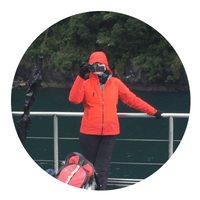
Written by Yvonne Dwyer
Master Naturalist and OPL Content Contributor
“It is truly an honor for me to be a contributor to One Planet Life. By sharing my experiences and lifetime of learning, I hope to inspire conservation, sustainability, stewardship, and awareness of enjoying the natural wonders of the world for the wellbeing of people and the planet.”

